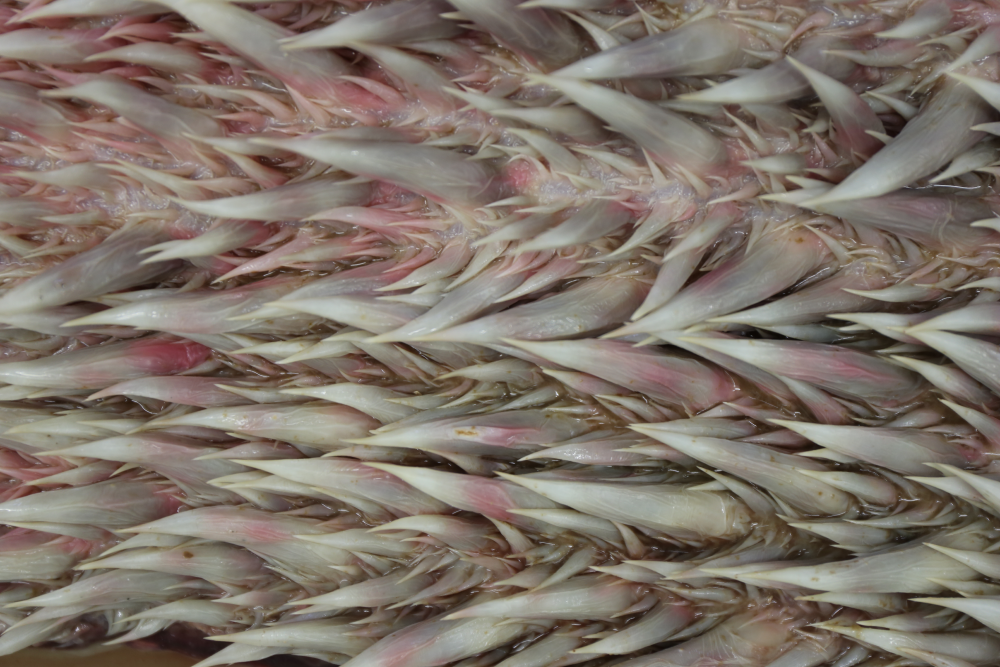A jellyfish invasion might not be on your Doomsday Bingo Card, but it probably should be. They’re a long way from seizing the land, but below the ocean surface, a war is already raging. Fortunately, an unlikely hero stands between our seas and a total jelly takeover: the humble sea turtle.
Look inside a turtle’s mouth and you get some idea as to what makes these guys such efficient jellyfish assassins. If you’re doubting that a diet of floating blobs can amount to much, just look at the enormous leatherback, Dermochelys coriacea.
The leatherback turtle eats almost exclusively jellyfish and yet can weigh between 250 and 907 kilograms (550 and 2,000 pounds), reaching lengths of up to 1.8 meters (6 feet). They’re able to slurp up jellies like the stinging predatory lion’s mane with the aid of a nightmarish set of backward-pointing spines that mean once something goes in, it doesn’t come out.
Leatherbacks can eat 16,000 calories worth of jellyfish a day, reports National Geographic, accounting for around 73 percent of their body weight. A combination of abundance and ease makes jellyfish a sustainable diet as the turtles have a 100 percent success rate hunting them, consuming around 1,000 metric tons of jellies over their 50-year lifespan.
And a good thing, too, because jellyfish are getting worryingly close to taking over.
In an eye-opening TED-Ed animation, Mariela Pajuelo and Javier Antonio Quinones demonstrate the crucial role sea turtles play in preventing jellyfish from dominating the oceans. Why would such a takeover be a problem? Because jellyfish are remarkably voracious predators.
Larvae, eggs, small fish, and crustaceans are all on the menu, and they can outcompete larger species by consuming all the resources they need to survive. In parts of the world, they’ve even ground human operations to a halt, such as in Sweden where a swarm of moon jellies clogged the pipes of a nuclear reactor – one of the world’s largest – forcing it to shut down.
“If things stay on their current trajectory, we could be headed for a future where the entire ocean is thick with jellyfish,” says the TED-Ed narrator.
The superpower that makes leatherbacks and other turtles the perfect contender for jellyfish is that they are immune to their attack and defence strategies. Jellyfish have tentacles covered in cnidocytes that pack venomous harpoons called nematocysts that are released when they come into contact with foe or food, stinging and even sometimes paralyzing them.
A leatherback’s esophagus is not a good place to find yourself.
It’s no good on turtles because they’re protected by scales made up of keratin, which is the same thing our nails are made of. The backward-facing spines in that hellish mouth we mentioned earlier are also made of keratin, so the jellyfish’s sting is as useless inside the leatherback as it is out.
Even with leatherbacks eating a grand piano’s worth of jellyfish every day, they are facing an uphill battle because jellyfish can reproduce asexually as well as sexually, and sometimes in enormous blooms. Humans aren’t helping here, as our fertilizer runoff from farming can increase their rates of reproduction, making an even bigger job for our leatherbacks. Add to that the fishing practices that, in some parts of the ocean, have been pushing turtle species to extinction, and it’s easy to see where we’re going wrong.
If we want leatherback turtles to come to our rescue, first we need to come to theirs and recognize the importance of predators in an ecosystem.
Source Link: One Hero Stands Between Us And A Total Jellyfish Takeover
